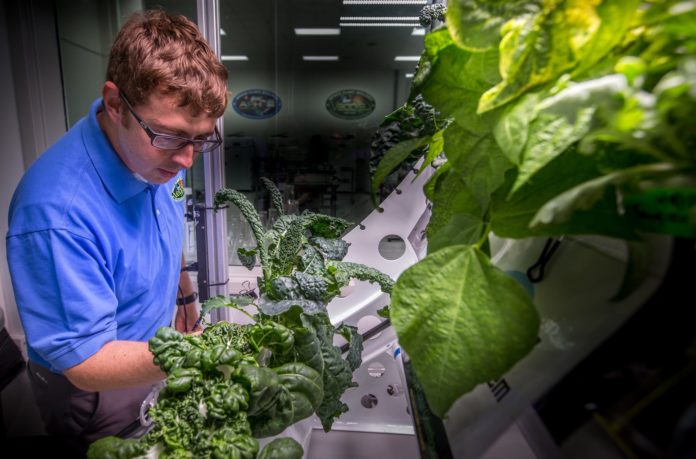
Researchers have grown lettuce on board the International Space Station, and the crop is as nutritious as its equivalent cultivated on Earth. The red romaine lettuce grown was free of disease-causing microbes and safe to eat, an advancement that will help astronauts grow fresh food during space missions.
The lettuce was grown in low gravity conditions and underwent greater radiation than that on Earth. Until now, astronauts used to live on pre-packaged space rations such as fruits, chicken, and beef and gained all their necessary vitamins and minerals from these processed foods.
According to the study published in the journal “Frontiers in Plant Science”, the space-grown salad will provide astronauts with essential vitamins including K, B1, and C. Pre-processed rations which need to be stored for long periods of time have lesser amounts of these essential vitamins and hence the need for cultivation onboard space flights.

Growing crops onboard will be extremely useful for long-distance space missions such as the upcoming space mission to land humans on the lunar South pole by 2024. The ability to grow food will become critical as NASA moves towards longer missions.
The lettuce was grown onboard the ISS between 2014 and 2016 from surface-sterilized seeds, within growth chambers equipped with LED lighting and a watering system. The soil was a nutrient-rich substance resembling cat litter and was strewn with fertilizer pellets. The roots were directly administered with water and overhead fans ensured that the CO2 and O2 kept moving around the chamber.

The crops grew for 33 to 56 days until the crew members tested it for any ill effects. The rest of the lettuce was frozen and transported back to Earth for analysis. Every experiment requires a control group, so researchers grew the lettuce under the same conditions on Earth – with the same temperature, CO2 and humidity levels as onboard the ISS. In some trials, the space-grown plants tended to have greater amounts of elements such as zinc, potassium, and sulfur.
Both the test cases had roughly the same level of antioxidants, a substance that protects your cells from damage caused by highly reactive natural chemicals found in your body. The microbes found on both lettuces were also similar, with 15 of the most common microbial genera present on the leaves and 20 in the roots. Overall, the findings of the study ensured that the crops grown in space were as healthy as the ones grown on Earth, and these results open multiple avenues into different food options for astronauts during long flight missions.
Space farming also has a significant impact on the mind and well-being of scientists in space. Gardening is very beneficial to a person’s mental health and ensures that astronauts, who spend most of their time cooped up in small spaces, have a soothing activity to partake in.
“There’s a great deal of joy in growing and watering the plants and producing a flower,” Robinson, the ISS scientist, says.
Further Reading-

